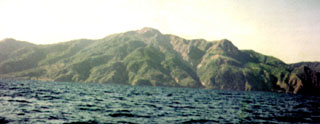Report on Paluweh (Indonesia) — 6 November-12 November 2024
Smithsonian Institution / US Geological Survey
Weekly Volcanic Activity Report, 6 November-12 November 2024
Managing Editor: Sally Sennert.
Written by Zachary W. Hastings.
Please cite this report as:
Global Volcanism Program, 2024. Report on Paluweh (Indonesia) (Hastings, Z W, and Sennert, S, eds.). Weekly Volcanic Activity Report, 6 November-12 November 2024. Smithsonian Institution and US Geological Survey.
Paluweh
Indonesia
8.32°S, 121.708°E; summit elev. 875 m
All times are local (unless otherwise noted)
The Pusat Vulkanologi dan Mitigasi Bencana Geologi (PVMBG) reported an increase in activity at Paluweh in the first two weeks of November. During 1-8 November there was an increase in recorded shallow volcanic earthquakes, and between 0900 and 1700 on 9 November people reported a strong sulfur odor. At 2100 on 10 November the Alert Level was raised from 1 to 2 (on a scale of 4), and the public was warned to stay 2 km away from the crater. During 10-12 November no emissions were observed, and seismicity remained about the same.
Geological Summary. Paluweh, also known as Rokatenda, forms the 8-km-wide island of Palu'e north of the volcanic arc that cuts across Flores Island. The broad irregular summit region contains overlapping craters up to 900 m wide and several lava domes. Several flank vents occur along a NW-trending fissure. A large eruption in 1928 included strong explosive activity accompanied by landslide-induced tsunamis and lava dome emplacement. Pyroclastic flows in August 2013 resulted in fatalities.
Source: Pusat Vulkanologi dan Mitigasi Bencana Geologi (PVMBG, also known as CVGHM)

